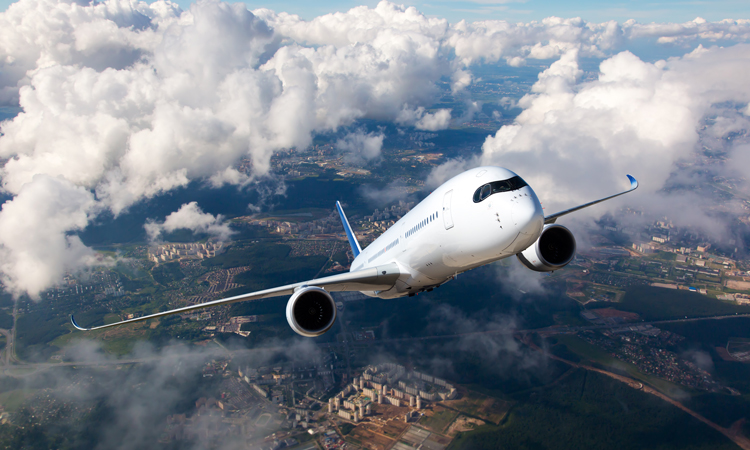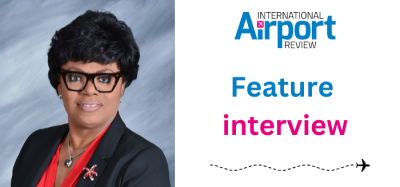New COVID-19 guidance for aviation published by UK government
- Like
- Digg
- Del
- Tumblr
- VKontakte
- Buffer
- Love This
- Odnoklassniki
- Meneame
- Blogger
- Amazon
- Yahoo Mail
- Gmail
- AOL
- Newsvine
- HackerNews
- Evernote
- MySpace
- Mail.ru
- Viadeo
- Line
- Comments
- Yummly
- SMS
- Viber
- Telegram
- Subscribe
- Skype
- Facebook Messenger
- Kakao
- LiveJournal
- Yammer
- Edgar
- Fintel
- Mix
- Instapaper
- Copy Link
Posted: 12 June 2020 | International Airport Review | No comments yet
Based on scientific advice and industry collaboration, the new guidance aims to encourage the quick resumption of the UK aviation industry as soon as it is deemed safe to do so.


The UK’s Department for Transport (DfT) has published new aviation guidance that outlines measures that airport operators should put in place in order to protect its staff and passengers and limit the spread of COVID-19.
The guidance, produced by the UK government’s International Aviation Taskforce in collaboration with the industry, also provides advice for passengers on how to travel safely and on how to follow social distancing measures at each stage of their journey.
The UK’s Transport Secretary, Grant Shapps, said: “Today’s guidance is a positive next step towards ensuring a safer and more sustainable aviation sector. The government’s advice currently remains to avoid all non-essential travel, but today we are taking the necessary steps to ensure a framework is in place for the aviation industry to bounce back when it is safe for restrictions on travel to be lifted.”
The guidance focuses extensively on the health and safety of passengers and staff and is in line with international best practice. It is the culmination of an extensive programme of engagement between the government, the aviation industry and public health experts. It outlines a framework for the industry to operate from once travel restrictions are lifted and when it is safe to do so, helping to restore jobs, trade, and opportunities for travel.
The guidance to passengers covers all aspects of the travel experience, from checking the public health requirements before booking a flight, to navigating the airport safely, as well as boarding the flight or leaving the airport. Practical advice includes: wearing face coverings when in the airport; washing hands regularly after touching any surfaces; checking in all baggage (including hand luggage); and remaining seated as much as possible during the flight.
The guidance to operators will also support staff by promoting safe practices and workplaces. This includes: extensive cleaning of aircraft; increasing the availability of hand-washing and hand sanitiser facilities; reducing face-to-face interactions with passengers; and introducing protocols for symptomatic passengers and staff.
Industry responses
Manchester Airports Group
Tim Hawkins, Chief Strategy Officer at Manchester Airports Group (MAG), said: “This new guidance provides the basis for the restart and recovery of the UK aviation industry – it offers clear information for us, our passengers and our airlines on the steps needed to create a safe travel experience. The guidance is the result of strong collaboration between the government and the aviation industry, drawing on advice from independent medical and scientific experts who have looked specifically at what safety measures are needed at each stage of the travel process. With similar protocols being adopted in other countries, and a targeted approach to reopening travel to low-risk countries, we will have the elements in place to get our economy moving again and protect jobs throughout the whole aviation supply chain.”
Airport Operators Association
Chief Executive of the Airport Operators Association (AOA), Karen Dee, said: “The publication of these health measures based on clear medical and scientific advice will play a vital role in rebuilding confidence in air travel and allow the UK to lead internationally again. These measures mark a great step forward in building the confidence needed in the aviation system and must lead to the removal of the quarantine measures at the earliest opportunity and the urgent introduction of air bridges to get Britain flying again. Removing the quarantine and putting in place a more risk-based approach to border health measures, such as what was announced today, is essential if the UK aviation industry is to restart and become an engine of future UK economic growth.”
Related topics
Airport crisis management, COVID-19, Passenger experience and seamless travel, Regulation and Legislation, Safety, Terminal operations
Related organisations
Airport Operators Association (AOA), Department for Transport (DfT), Manchester Airports Group (MAG), UK Government


















